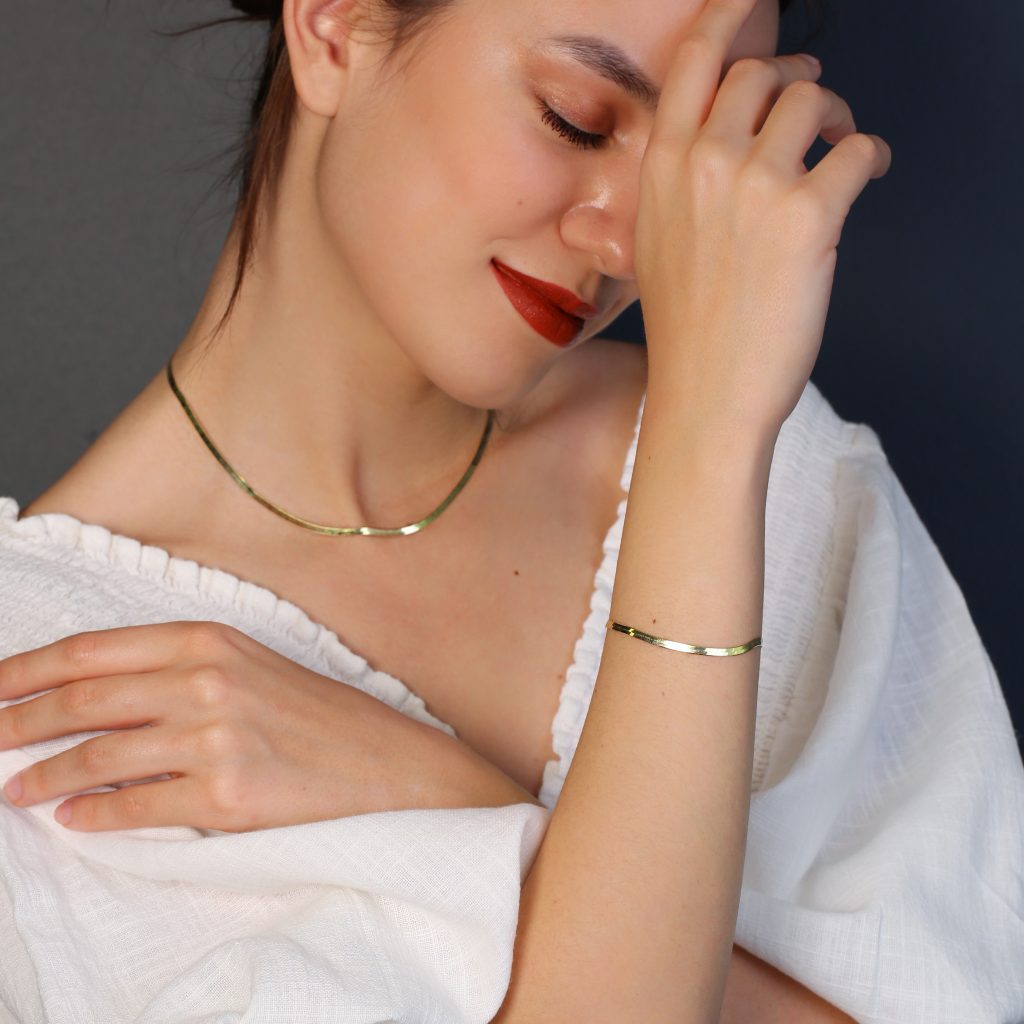925 sterling silver jewelry has long been celebrated for its timeless elegance and versatility. The ‘925’ hallmark indicates that the jewelry is crafted from an alloy containing 92.5% pure silver, with the remaining 7.5% typically composed of copper or other metals. While 925 sterling silver is a popular choice, not all pieces are created equal. In this article, we will explore the various types and quality levels of 925 sterling silver jewelry, helping you make informed decisions when selecting pieces that blend beauty with durability.
Types of 925 Sterling Silver Jewelry:
- Traditional 925 Sterling Silver:
- The classic and most prevalent type of 925 sterling silver jewelry contains the standard composition of 92.5% pure silver and 7.5% other metals. This alloy strikes a balance between purity and strength, making it suitable for various jewelry designs, from intricate necklaces to durable rings.
- Oxidized Sterling Silver:
- Oxidized sterling silver undergoes a controlled oxidation process to achieve a darkened or antique finish. This type of jewelry is often chosen for its unique and rustic appearance, highlighting details and adding depth to the design. Oxidation can also enhance the contrast with gemstones or other elements in the jewelry.
Quality Levels of 925 Sterling Silver Jewelry:
- High-Polished 925 Sterling Silver:
- High-polished 925 sterling silver jewelry showcases a mirror-like, glossy finish. This type of finish enhances the brilliance of the silver, making it an excellent choice for pieces that prioritize a sleek and modern aesthetic. High-polished surfaces are more prone to scratches and may require regular maintenance to preserve their luster.
- Rhodium-Plated 925 Sterling Silver:
- Rhodium plating involves adding a thin layer of rhodium, a precious metal from the platinum group, to the surface of 925 sterling silver jewelry. This process not only enhances the jewelry’s appearance with a bright white finish but also provides increased resistance to tarnishing. Rhodium-plated pieces are known for their durability and long-lasting shine.
- Stone-Adorned 925 Sterling Silver Jewelry:
- 925 sterling silver jewelry often features gemstone embellishments, ranging from classic diamonds to vibrant colored stones. The quality of gemstones, their cut, clarity, and setting, significantly influences the overall quality and value of the piece. Well-crafted gemstone settings enhance both the aesthetic and durability of the jewelry.
Choosing Quality 925 Sterling Silver Jewelry:
- Hallmarks: Authentic 925 sterling silver jewelry will bear a hallmark, typically ‘925’ or ‘Sterling,’ indicating its composition. This hallmark assures buyers of the jewelry’s genuine silver content.
- Finishing Techniques: Consider the finishing techniques applied to the jewelry, whether it’s high-polished for a sleek look, oxidized for a vintage feel, or rhodium-plated for added protection against tarnish.
- Stone Quality: When purchasing jewelry with gemstones, assess the quality of the stones, including their color, clarity, and cut. Well-set gemstones contribute to both the visual appeal and durability of the piece.
Understanding the types and quality levels of 925 sterling silver jewelry empowers consumers to make informed choices that align with their preferences and expectations. Whether opting for traditional sterling silver, exploring oxidized finishes, or selecting rhodium-plated pieces, each type offers a unique combination of beauty and durability. By considering hallmarks, finishing techniques, and stone quality, individuals can confidently choose 925 sterling silver jewelry that not only enhances their style but also stands the test of time.

